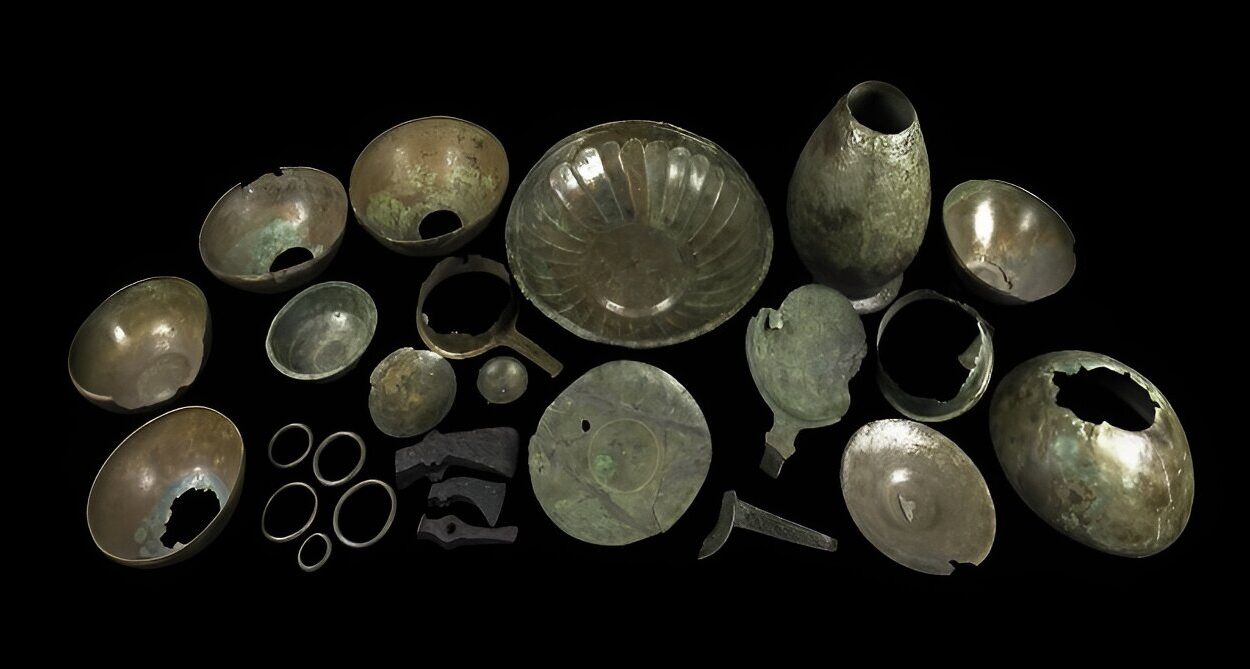For over a century and a half, the Knaresborough Hoard, a collection of Roman metalware, remained shrouded in mystery. Discovered around 1864, the objects were donated to the Yorkshire Museum but their origin and purpose were unknown. Now, thanks to a meticulous study by archaeologist Jessica De Maso and her team at Newcastle University, the story of the Knaresborough Hoard is finally beginning to unfold.
De Maso’s research, published in The Antiquaries Journal, sheds light on several key aspects of the hoard. Firstly, it suggests a more precise location for the discovery – a boggy area near Farnham, north of Knaresborough. This area was strategically significant during Roman times, intersected by two major roads and dotted with wealthy villas. This proximity to Roman settlements hints that the hoard may have originated from one such villa or a nearby affluent residence.
Secondly, the study reveals the unique nature of the hoard. Unlike any other late Roman metalware find in Britain, the Knaresborough collection was deposited in a bog. The reasons behind this remain unclear, but similar practices in other parts of the Roman Empire suggest possibilities ranging from ritual offerings to simple acts of hiding valuables.
Intriguingly, the research also uncovered evidence of a partial loss. De Maso’s team believes a number of items were mistakenly melted down by the original donor, Thomas Gott, a local ironmonger. Despite this loss, the remaining collection offers a fascinating glimpse into Roman life.
The surviving pieces, primarily crafted from bronze, include a large fluted bowl, a unique vessel handle, and various bowls, strainers, and plates. X-ray analysis revealed that many items were designed to impress. When polished, the bronze resembled gold, showcasing the owner’s wealth during meals and social gatherings. The presence of repairs on several pieces further underscores their value as prized possessions.
The research extends beyond the hoard itself, delving into the story of Thomas Gott. De Maso’s team unearthed details about Gott’s personal life, including his controversial second marriage, and his possible connection to Frederick Hartley, a local land agent. This connection suggests that the hoard was likely unearthed during drainage works on land owned by Sir Charles Slingsby, for whom Hartley worked. Gott may have received the hoard from Hartley, keeping a single piece for himself before donating the majority to the Yorkshire Museum.
Jessica De Maso’s work exemplifies the importance of revisiting historical collections. The Knaresborough Hoard, long relegated to museum display, has yielded a wealth of information about Roman life, trade routes, and even the personal stories of those involved in its discovery. This research paves the way for further exploration of the hoard, offering a unique window into Roman Britain. As Adam Parker, Curator of Archaeology at the Yorkshire Museum, remarks, “The excellent work undertaken by Newcastle University has unlocked the research potential of these objects for the first time and will allow us to tell their story more completely.” The Knaresborough Hoard, once a collection shrouded in mystery, is now poised to become a cornerstone in our understanding of Roman Britain.










